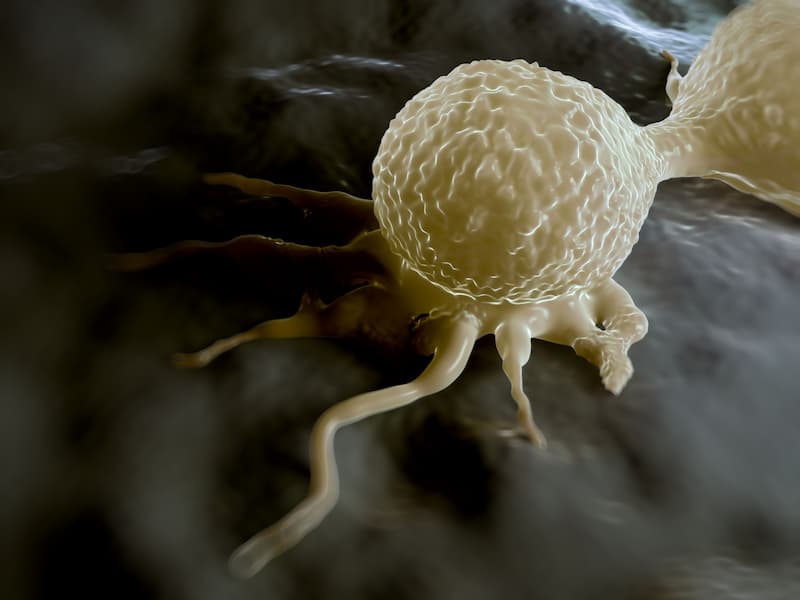SHR-A1811 Shows Promising Activity in HR+/HER2-Low Breast Cancer
The first stage of a phase 2 trial evaluating neoadjuvant SHR-A1811 in breast cancer meets its primary end point of ORR.
The single-arm phase 2 trial (NCT05911958) enrolled a total of 66 patients across 2 stages, the first of which included 35 patients with HR-positive/HER2-low breast cancer.

SHR-A1811, a novel anti-HER2 antibody drug conjugate (ADC), demonstrated promising anti-tumor activity and an acceptable safety profile in the neoadjuvant setting in patients with hormone receptor (HR)–positive/HER2-low breast cancer, according to stage 1 results from a phase 2 trial (NCT05911958) presented at the 2024 San Antonio Breast Cancer Symposium (SABCS).1
Efficacy findings from the first stage of the phase 2 trial reveal that the primary end point was met, with 26 of 35 evaluable patients achieving a response for an objective response rate (ORR) of 74.3%, which included 26 partial responses and 9 instances (25.7%) of stable disease. Furthermore, no patients achieved a pathological complete response (pCR) in the first trial stage.
The single-arm phase 2 trial enrolled a total of 66 patients across 2 stages, the first of which included 35 patients with HR-positive/HER2-low breast cancer. The trial would proceed to stage 2 with 31 additional patients if 18 or more patients in the first stage experienced a response with neoadjuvant SHR-A1811. Patients in the first stage of the study received 6.4 mg/kg of intravenous SHR-A1811 once every 3 weeks for 8 cycles, followed by surgery.
As of the data cutoff date of June 17, 2024, 34 patients in the first stage received the investigational agent and completed the treatment regimen. Of the 35 patients enrolled, 26 (74.3%) had node-positive disease, 30 (85.7%) had stage IIA/IIB disease, and 26 (74.3%) had a baseline HER2 expression of IHC 2+. The median age of patients included in the first stage was 49 (range, 35-63), with the majority (88.6%) of patients having an ECOG performance status of 0, a tumor size of T2 (97.1%), and 1 lymph node evaluable for response (62.9%).
The primary end point of the study was ORR. Key secondary end points included pCR, event-free survival, residual cancer burden, and safety.
Treatment-related adverse events (TRAEs) occurred in 100% of patients, with grade 3 or greater TRAEs reported in 23 (65.7%) patients. No grade 3 or higher neutropenia was reported, with no interstitial lung disease (ILD) or treatment-related deaths observed. Primary G-CSF prophylaxis was given to 13 patients.
Common grade 3 or higher treatment-related adverse effects (TRAEs) occurring in more than 20% of patients included neutropenia (48.6%), leukopenia (28.6%), and anemia (22.9%). Furthermore, the most common any-grade TRAEs included nausea (88.6%), asthenia (82.9%), vomiting (77.1%), leukopenia (65.7%), neutropenia (62.9%), and anemia (60.0%).
Patient eligibility criteria included adult patients ages 18 to 70 years who were treatment-naïve with histologically confirmed invasive breast cancer. Additional inclusion criteria included HR-positive/HER2-low disease and a Ki67 index greater than 14%. The second stage of the study is currently ongoing.
Results from the randomized (1:1:1), phase 2 FASCINATE-N trial (NCT05582499) evaluating neoadjuvant SHR-A1811 alone (n = 87); with nab-paclitaxel, carboplatin, trastuzumab (Herceptin), and pertuzumab (Perjeta, PCbHP, n = 90); or with pyrotinib (Irene, n = 88) in adult patients with HER2-positive breast cancer were also presented at SABCS.2
Investigators found that SHR-A1811 elicited a pCR rate of 63% across all cohorts with no statistical difference between groups. Furthermore, grade 3 or higher TRAEs occurred in 44.8% of the monotherapy arm, 71.6% of the pyrotinib arm, and 38.8% of the PCbHP arm.
The primary end point of the FASCINATE-N study was pCR in all patients in the intention-to-treat population (n = 265). Secondary end points included ORR, invasive disease-free survival, overall survival, and safety.
References
- Liu Z, Qiao J, Wang, C. SHR-A1811 as neoadjuvant treatment in patients with HR-positive, HER2-low breast cancer: the first-stage results from an open-label, single-arm, two-stage, phase II clinical trial. Presented at: 2024 San Antonio Breast Conference Symposium; December 10-13, 2024; San Antonio, TX. PS3-07.
- Li J. HER2-directed antibody-drug conjugate SHR-A1811 in the neoadjuvant treatment of HER2-positive early breast cancer: a prospective, randomized, open-label, phase 2 trial. Presented at: 2024 San Antonio Breast Cancer Symposium; December 10-13, 2024; San Antonio, TX. GS1-04.